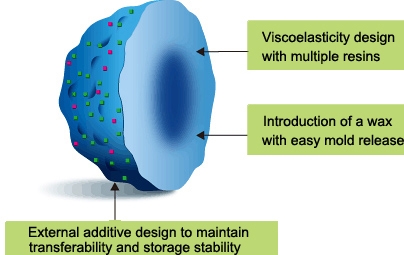





Digital printing has always been recognised as having environmental benefits, but the new generation of digital presses go above and beyond the advantages of 15 years ago.
When digital printing was first introduced it was apparent that there were going to be some real environmental advantages to be gained. The digital presses of today are sleeker, quicker, efficient and very good at printing. So now that quality is nailed on as a given, what exactly are those eco-friendly digital printing benefits?
The benefits are three fold:-
Efficiency, Waste, Consumables
Efficiency
Each new generation of digital press is more efficient than the last, using less energy to print more paper, faster. This means that less CO2 is produced, greenhouse gasses and pollutants are minimised.
Digitally printed sheets come off the press dry and do not need to be UV cured or air dried before the sheets can be handled – another efficiency and energy saving benefit.
Finally, the time taken to get a job ready on a digital press is down to a couple of minutes; on a litho press it can take as much as 15 – 30 minutes. All that time the press is running slowly or in ‘stand-by’ but nonetheless drawing power all the time.
Our Ricoh C900 Pro is labelled as an Energy Star press. This means efficient energy consumption and performance can be both measured and verified.
Waste
Digital printing requires very little paper to set a job up prior to printing the full run, typically only a couple of sheets. The reduction in paper waste, time and energy are all beneficial to the customer and the environment. (Our Ryobi litho presses are very efficient at making ready a job, using approximately 100 sheets of paper before the job is in register and able to print the full run, but this is a good comparison of the benefits of digital v litho.)
Consumables
A digital press does not require any form of printing plate or the chemistry required to run a litho press. This not only means it is a cheaper press to run, but also means it does not contribute to the energy and any harmful chemicals associated with making them – another eco-friendly benefit.
The new generation of toners for digital printing has moved away from the’ pulverising and grinding’ method of manufacture and moved towards ‘growing’ polymerised toners from inert ingredients. These tiny, uniform particles of toner fuse to the paper at much lower temperatures, therefore using less energy and achieving greater power savings.

Our Ricoh toners use 25 -35% less energy per 450g of toner and 40-50% less toner is required during printing.
Toner Binder - the key ingredient
Ricoh has developed a new plant-based resin made from rosin and lignin for use as toner binders which will be in full scale production soon. Both are naturally occurring polymers, present in wood and plants with a positive environmental lifecycle, being relatively efficient to extract and process, and biodegradable after use. In the meantime, the binder is a natural wax that is used to suspend the pigments.
Toner Pigments - where the colour comes from
Emulsion Aggregate toners are advanced toners with a reduced environmental impact, being energy efficient in terms of their manufacture as well as their use.
EA toners are made by growing desired size toner particles from small polymeric particles dispersed in water which is then blended with small colorant particles (pigments) and optionally wax and/or other components also dispersed in water. The result is an eco-friendly toner that gives great colour and coverage, uses less energy in production and use and is petroleum and oil free.
Hopefully you are now convinced that eco-friendly digital printing is a good route to take, especially if you have a requirement for small print jobs which is where digital printing is a friend to your pocket as well as the environment! Why not browse through our 'Small Order' category for digitally printed products, including brochures, flyers, leaflets, postcards and presentation folder.